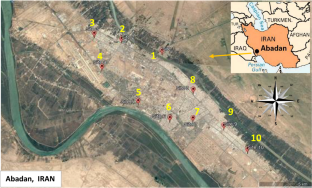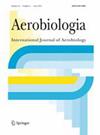In recent years, monitoring of airborne bacteria and fungi concentrations has obtained increasing universal attraction not only for influences on ecological balance but also for evaluating their public health consequences. In this study, we aimed to investigate culturable airborne bacteria and fungi levels in different sites of Abadan, and their association with meteorological parameters and PM2.5 levels. Abadan is one of the most industrialized cities in the southwest of Iran where over the current decade has experienced lots of dust storm episodes. In total, 400 air samples were collected in 6 months (autumn and winter) using a single-stage viable Andersen cascade impactor for sampling airborne bacteria and fungi and portable DustTrak Aerosol Monitor 8520 for measuring PM2.5 concentrations and meteorological parameters. Microbial concentrations showed a significant difference between various sites over the study period with averages of 569.57 ± 312.64 and 482.73 ± 242.86 CFU/M3 for bacteria and fungi, respectively. The air temperature had a significant effect on the concentration of both airborne bacteria and fungi. A significant positive correlation between relative humidity and fungi but no correlation between relative humidity and bacteria concentrations were observed. The average airborne PM2.5 concentrations of all sites among the study period was 93.24 ± 116.72 μg/m3. The atmospheric bacterial and fungal communities were strongly positively correlated with the ambient PM2.5 level. The levels of airborne bacteria and fungi along with PM2.5 in the air of the city were relatively higher than the recommended levels. Therefore, the best course of action is needed to control emission sources. Further studies are also needed to evaluate the clinical analysis of the health effects of exposure to these pollutants.



